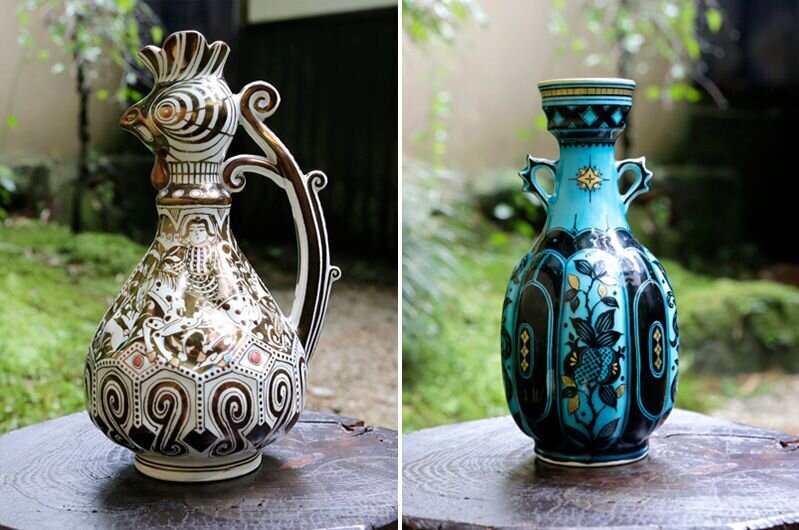Tokyo’s ambassador to Tehran visits Japanese kiln reviving Persian pottery

TEHRAN - Tokyo’s ambassador to Tehran Kazutoshi Aikawa has recently paid a visit to a historical Japanese kiln that produces special kinds of Persian pottery in the city of Tajimi , Mehr reported on Tuesday.
The kiln was originally founded in 1804 by first-generation founder Katou Kobe, who dyed and supplied tableware to high-rank customers, including the lords of the enormous Edo castle in present-day Tokyo.
In addition to experiencing painting on pottery in local workshops, the ambassador went to see Persian lusterware ceramics on display Tajimi Mosaic Tile Museum, the report said.
In spite of its inspiring tradition, the kiln is still not well represented abroad and is currently working to establish itself in China, Europe and elsewhere. By contrast, the masters of the Kobe-Gama Pottery has played a significant role in bringing foreign ceramic culture to Japan.
The late Living National Treasure, Takuo Kato (1917–2005), who was the sixth-generation master ceramicist of Kobe-Gama, was the man who first found interest in ancient Persian lusterware ceramics. It’s gorgeous blue and three-colour glazes inspired him to revive the techniques of the Persian potters that had been entirely lost after the 17th century.
However, the journey to success was a long one, as there was no information on how the old Persians made their lusterware. Finally, Kato came upon the research of a deceased American professor, Arthur Upham Pope, at a visit to Pahlavi University in Tehran. Pope was dead, but fortunately, his wife was still alive and showed Pope’s work to the Japanese ceramist.
Kato now realised that not only was the clay used by the Persians different from that in Japan, but glazes included lead, tin, sodium, and other ingredients not utilized in the East Asian ceramic tradition. Besides, the lusterware kilns needed to be small. They could only accommodate a few pieces at a time, and the firing temperatures must be kept quite low.
Persian lusterware ceramics, locally known as Zarrin-Fam pottery, bear a striking luster that resembles gold. The pinnacle of Persian lusterware ceramics can be traced to the second half of the twelfth century CE when Persian poems and epigraphy played an important role in inspiring potters of the time who decorated their works with poems and inscriptions alongside other decorative pictures.
Experts say poems and inscriptions, which have a close relationship with the artist’s personal taste, and sense and the culture and, literature of its time, have an important role in Zarrin-Fam pottery’s design, which is mostly neglected in archeological studies.
AFM
Leave a Comment